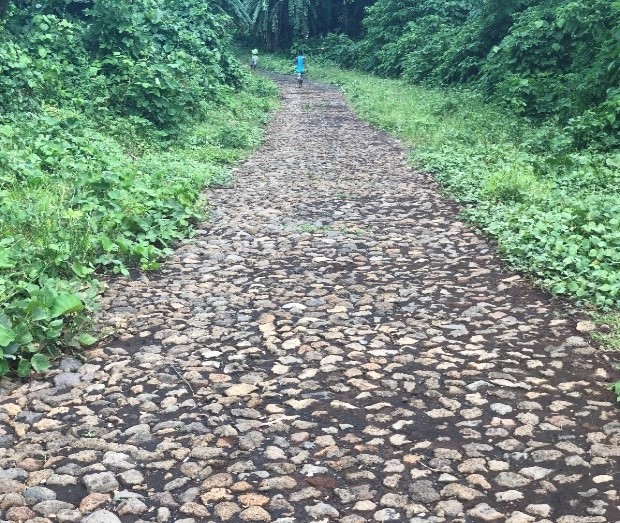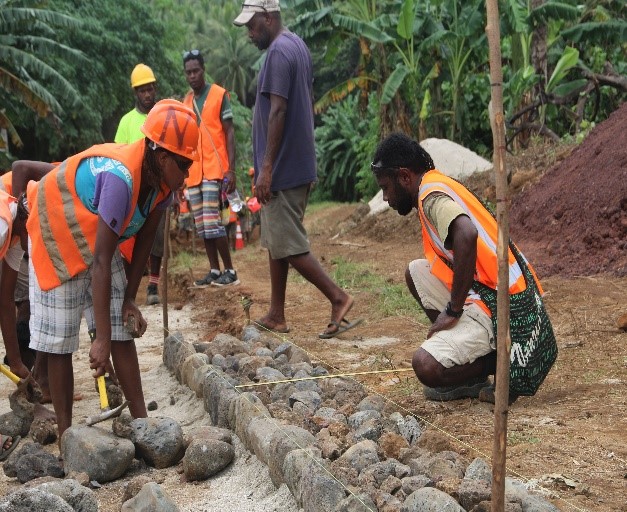Cobblestone pavements were first used in Rome in the Third century and thereafter used extensively throughout Europe. Since 2015, and closer to home, the Roads for Development Phase 2 (R4D2) program, funded by the Australian Government, have worked together with the Public Works Department (PWD) and the communities in Gaua Island in Torba Province to continue building Cobblestone pavements to improve rural roads.
Mr Alain Buleuru, PWD’s site inspector for Gaua noted “Before the road condition was very bad, when there is a big heavy rain, the road was very muddy and slippery and created big potholes and so the vehicles cannot run on the road”.
Hence, the new model of Cobblestone pavements was introduced by the R4D2 advisers to the PWD staff in Torba Division to construct local roads. Mr Buleuru confirmed that sections of the roads on Gaua were built with available local resources using Volcanic stones utilising local community labour. He said the advice provided by the R4D2 team was very helpful as now he was of one of the PWD staff who knew how to construct Cobblestone pavements.
Mr Buleuru confirmed that the heavy rainfall during tropical cyclone Harold in April this year did not damage the Cobblestone roads on Gaua, he said the Cobblestone pavement model is very strong, resistant and this method of construction is appropriate for a remote place like Gaua.
This Cobblestone pavement shown below is between Navsari Airport and Bigwota.


Cobblestone Pavement in Gaua
